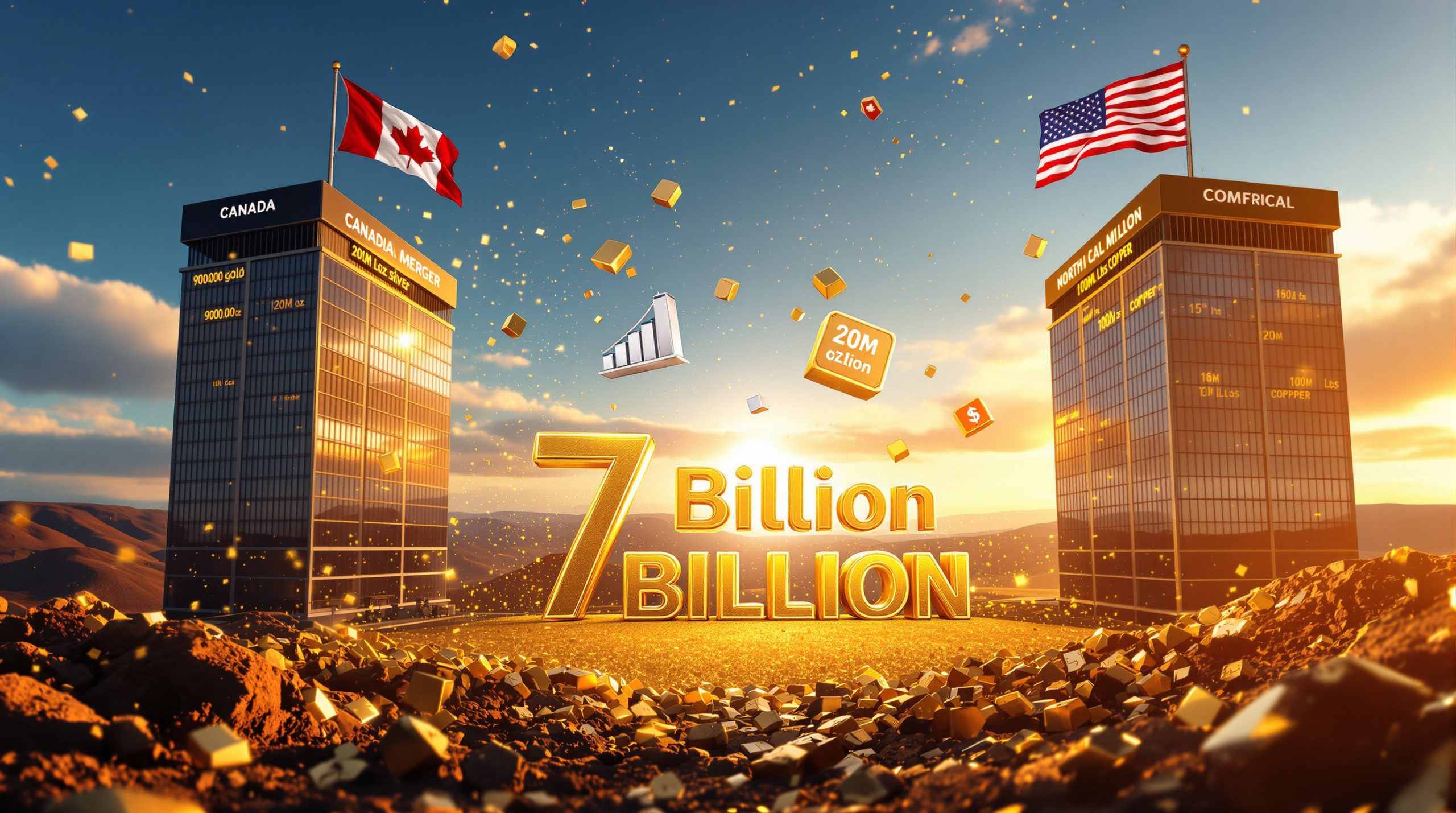How Has the Historical Belgium-Congo Relationship Shaped Current Mineral Partnerships?
The relationship between Belgium and the Democratic Republic of Congo in the minerals sector represents a complex evolution from colonial extraction to modern strategic partnership. This transformation reflects broader geopolitical shifts and the growing importance of critical minerals in global supply chains. Today's Belgian-Congolese mineral collaborations build upon historical connections while adapting to contemporary economic realities and ESG challenges in mining.
The Colonial Legacy in Congo's Mining Sector
Belgium's connection with Congo's mineral wealth originated during the colonial period (1908-1960) when Belgian companies established the foundation for systematic mineral extraction across the region. The Union Minière du Haut-Katanga, founded in 1906, dominated early copper and cobalt mining, creating extraction infrastructure that continues to influence present-day operations.
Following Congo's independence in 1960, Belgian corporate involvement persisted despite significant political changes. While many colonial-era mining operations were nationalized in the 1970s under President Mobutu Sese Seko's "Zairianization" policy, Belgian technical advisors and commercial relationships continued to shape the sector's development.
Dr. Emmanuel Nshimbi, mining historian at the University of Kinshasa, notes: "The physical infrastructure may have changed hands, but Belgian geological knowledge and trading networks maintained influence long after independence, creating pathways for today's partnerships."
This historical foundation provides Belgian companies with distinct advantages in navigating Congo's complex mineral landscape – including familiarity with deposit locations, quality variations, and local business networks that new market entrants lack.
Belgian Companies' Current Footprint in Congo
Despite China's dominant position in Congo's mining sector today (controlling approximately 68% of industrial production), Belgian firms maintain strategically significant operations focused on specialized minerals and processing technologies. This represents a deliberate pivot from mass extraction toward value-added services and technical expertise.
Belgium-based materials technology group Umicore exemplifies this approach through its 2024 agreement with state mining company Gecamines to process germanium concentrates. This landmark deal will direct approximately 500 tonnes of germanium annually to Belgium by 2026, establishing a crucial supply chain for this semiconductor material increasingly vital for fiber optics and infrared technology.
Umicore's hydrometallurgical processing facilities reduce environmental impact by approximately 30% compared to traditional refining methods used by competitors. The company's CEO Mathias Miedreich emphasized this advantage during the agreement signing: "Our Kolwezi pilot plant demonstrates circular economy principles for cobalt that align with both Belgian sustainability goals and Congo's development priorities."
Similarly, Belgian industrial equipment provider John Cockerill has developed modular smelting technology specifically adapted for Congo's remote mining regions, training over 1,200 Congolese engineers in automated processing techniques between 2020-2024.
Belgian companies now focus 80% of their mining-related foreign direct investment on processing infrastructure rather than primary extraction, according to 2023-2025 investment data from the Belgian-African Chamber of Commerce.
Why Is Congo Seeking to Diversify Its Mineral Investment Partners?
The Democratic Republic of Congo possesses extraordinary mineral wealth, yet faces significant challenges in maximizing the economic benefits of these resources. Recent diplomatic initiatives signal a strategic shift toward partner diversification to address these challenges while reducing dependence on dominant investors.
Challenges Facing Congo's Mining Sector
Congo's mining sector operates against a backdrop of persistent challenges that impact investor confidence and operational viability. The 2024 Fraser Institute ranking places Congo 76th out of 86 jurisdictions for mining investment attractiveness, highlighting the significant risk premium associated with operations in the country.
Political instability remains a primary concern, with government transitions frequently resulting in regulatory uncertainty and contract reviews. This volatility discourages long-term capital commitments essential for developing major mineral projects, particularly in emerging sectors like lithium extraction.
Security challenges present even more immediate obstacles, especially in the mineral-rich eastern provinces. Recent violence involving M23 rebels demonstrates this impact – a 2024 attack on the Kamoa-Kakula copper complex halted approximately 15% of national copper output for six weeks, costing an estimated $290 million in lost production.
According to a comprehensive World Bank assessment, "Eastern Congo's insecurity adds a 20-35% premium to operational costs" compared to similar mining operations in more stable regions. These security-related expenses include:
- Enhanced physical security infrastructure
- Higher insurance premiums
- Transportation risk mitigation
- Supply chain redundancies
- Personnel security arrangements
Infrastructure limitations further constrain development, with inadequate power supply interrupting processing operations and poor transportation networks increasing export costs. Many mining operations must generate their own electricity, adding 15-22% to production expenses compared to grid-connected facilities.
Strategic Diversification Initiatives
Congolese officials have initiated a deliberate strategy to diversify investment partnerships beyond the current Chinese dominance. Chinese mining investments totaled approximately $6.2 billion between 2010-2023, dwarfing the combined $890 million from EU member states during the same period.
Senator Bahati Lukwebo, a prominent figure in Congo's economic policy circles, articulated this approach during recent discussions with Western partners: "Diversification reduces geopolitical leverage risks; we seek partners offering tech transfer rather than simply resource extraction."
This diversification strategy includes:
-
Diplomatic outreach to multiple potential partners – Recent delegations to EU headquarters, Washington, and Abu Dhabi demonstrate this multi-directional approach
-
Exploration of innovative partnership structures – Discussions with U.S. officials have included potential "minerals-for-security" arrangements that would link resource access to security assistance in conflict-affected mining regions
-
Regulatory adjustments to attract Western investors – The mining code revision draft of 2024 includes specific provisions designed to align with EU due diligence requirements
-
Focus on value-added partnerships – Prioritizing agreements that include processing facilities rather than simple extraction rights
The UAE's 2023 $1.9 billion cobalt-for-infrastructure deal represents an alternative diversification model being explored. This arrangement, which bypasses traditional mining stocks guide structures, exchanges mineral offtake rights for guaranteed infrastructure development.
Transparency International's 2024 Corruption Perceptions Index scores Congo at just 18/100, underscoring corruption concerns that have historically deterred Western investors. Addressing these governance issues remains essential to broadening the investment base beyond partners less concerned with transparency standards.
What Makes Congo's Mineral Resources Globally Significant?
The Democratic Republic of Congo controls some of the world's most significant reserves of minerals essential to modern technology and clean energy transition, positioning it as a critical player in global supply chains despite its challenging investment environment.
Congo's Critical Mineral Wealth
Congo's mineral endowment includes extraordinary concentrations of several strategically vital resources:
Cobalt – The country controls approximately 70% of global cobalt production, with output reaching 95,000 tonnes in 2020. This near-monopoly position gives Congo enormous influence over the electric vehicle battery supply chain, as cobalt remains essential for high-performance lithium-ion batteries despite efforts to reduce content.
Copper – Congo's copper production surged 12% in 2020 to 1.5 million tonnes, according to the central bank. The country's USGS-verified 19 million tonnes of copper reserves rank among the highest-grade deposits globally, with copper content often exceeding 3% compared to the global average of 0.6-0.8%.
Lithium – The Manono deposit contains approximately 3 million tonnes of lithium carbonate equivalent (LCE), with AVZ Minerals targeting production of 700,000 tonnes per annum by 2027. Geological analyses indicate Congo's lithium resources feature exceptionally low impurity levels, reducing processing costs.
Germanium – Congo produced approximately 85 tonnes of germanium in 2023, with 60% now processed by Umicore following their Gecamines deal. This semiconductor material commands premium prices (over $1,800 per kilogram) due to its applications in fiber optics and infrared technology.
Tantalum (Coltan) – According to Congo's Mining Minister, "Our untapped coltan reserves could meet 40% of global tantalum demand" essential for capacitors in electronics. The country's eastern provinces contain some of the world's highest-grade coltan deposits.
The Kamoto Copper Company has pioneered bioleaching techniques that recover 92% of copper from low-grade ores previously considered uneconomical, demonstrating the technological innovation occurring within Congo's mining sector.
Strategic Importance for Global Supply Chains
Congo's mineral resources have taken on heightened geopolitical significance as countries and companies scramble to secure supply chains for the clean energy transition and technological advancement.
The EU's 2025 Battery Regulation requires 50% recycled cobalt content in new batteries, directly impacting demand for Congolese material and creating incentives for establishing circular supply chains connected to Belgian processing facilities.
Electric vehicle manufacturers face particular exposure to Congo's cobalt dominance. A typical 75kWh EV battery contains approximately 6.5kg of cobalt, with few economically viable alternatives despite intensive research into cobalt-free chemistries. This dependency has driven automotive manufacturers including Tesla and Volkswagen to establish direct offtake agreements with Congolese producers, bypassing traditional commodity markets.
The International Energy Agency projects that meeting climate goals will require a 21-fold increase in critical mineral supply chains by 2040, with Congo positioned as the primary source for several key materials. This creates both opportunity and responsibility for developing governance systems that ensure sustainable extraction.
Professor Marcel Tshiamala of the University of Lubumbashi notes: "Congo's mineral resources aren't just economically valuable – they're strategically essential to the global energy transition. This creates leverage for negotiating better terms with international partners if managed wisely."
What Is Belgium's New Strategic Approach to Congo's Mineral Sector?
Belgium has developed a nuanced strategy for engagement with Congo's mineral sector that leverages historical relationships while adapting to contemporary geopolitical realities. This approach emphasizes technical expertise and processing capabilities rather than competing directly with China's dominance in primary extraction.
Belgium's Official Position on Deeper Involvement
Foreign Affairs Minister Maxime Prevot has articulated Belgium's openness to deeper sector involvement during his recent diplomatic mission to Congo. "Belgium's globally recognized expertise in critical minerals processing aligns with Congo's need for value-added partnerships," Prevot stated during discussions with Congolese officials in Kinshasa.
Belgium deliberately positions its approach as beneficial for both countries, emphasizing sustainable development and technology transfer over resource extraction alone. Official statements consistently contrast Belgian methods with what Prevot described as "more transactional" approaches of other international actors – a thinly veiled reference to Chinese dominance in the sector.
This diplomatic framing reflects Belgium's recognition of both the economic opportunities in Congo's mineral sector and the complex ethical considerations involved. Prevot's visit to Beni in eastern Congo specifically highlighted human rights concerns alongside economic discussions, demonstrating Belgium's attempt to integrate responsible business practices into its mineral strategy.
Belgium's approach aligns with broader European Union priorities established through the Critical Raw Materials Act, which mandates 30% intra-EU processing by 2030. This legislation creates structural incentives for Belgian companies to establish mineral supply chains from Congo that include significant value-addition within EU borders.
The Belgian strategy also acknowledges historical responsibilities while focusing on future-oriented partnerships. As Dr. Liesbeth Vandenbroeck, Belgian mining policy analyst, observes: "Belgium's approach recognizes the colonial legacy without being constrained by it, focusing instead on mutual benefits through technical partnership."
Belgian Technical Capabilities in Critical Minerals
Minister Prevot's emphasis on "globally recognized expertise" of Belgian companies reflects genuine technical advantages in specialized aspects of the mineral value chain. Belgian firms have developed particular strengths in:
-
Advanced refining and recycling – Umicore operates one of the world's most sophisticated precious metals recycling facilities, capable of recovering 17 different metals from complex electronic waste and industrial residues
-
Metallurgical processing equipment – John Cockerill's custom-designed processing systems allow for efficient extraction from challenging ore bodies
-
Specialized alloy production – Belgian metallurgical firms produce high-performance alloys required for aerospace and defense applications
-
Environmental remediation technologies – Methods for addressing historical mining contamination represent a growth area for Belgian companies
-
Supply chain traceability systems – Belgian technology firms have pioneered blockchain-based mineral tracking systems
Preferential EU tariff structures provide significant incentives for Congolese minerals processed through Belgian facilities, with refined materials facing just 4% import duties compared to 15% for raw ores. This economic advantage reinforces the strategic focus on processing rather than extraction.
The 2024 Katanga Green Mining Initiative, co-funded by Belgium, has already demonstrated tangible results by reducing water usage by 40% in participating copper mines while improving recovery rates. This project exemplifies the emphasis on sustainable practices that characterize Belgium's approach.
Belgian companies have committed to comprehensive skills transfer programs, with John Cockerill training 1,200 Congolese engineers in automated smelting techniques between 2020-2024. This emphasis on local capacity building contrasts with approaches that rely heavily on expatriate technical staff.
How Does the Geopolitical Competition for Congo's Minerals Impact Partnerships?
The competition for access to Congo's strategic minerals reflects broader geopolitical tensions, with Belgium operating within a complex landscape of competing national interests and private sector objectives. This competition directly impacts the terms, conditions, and viability of potential partnerships.
International Resource Competition in Congo
China has established a dominant position in Congo's mining sector through strategic investments totaling approximately $6.2 billion between 2010-2023. Chinese companies control an estimated 68% of Congo's industrial mineral production, compared to Belgium's 5% market share.
This Chinese dominance has primarily focused on securing raw materials for domestic manufacturing rather than developing local processing capacity. Chinese mining operations in Congo typically export minimally processed concentrates for refining in Chinese facilities, capturing a larger portion of the value chain outside Congo.
Western nations have increasingly recognized critical mineral access as a strategic priority:
-
The European Union's Critical Raw Materials Act explicitly identifies Congo as a priority partner country for securing battery minerals
-
The United States has designated several Congolese minerals as critical to national security through its 2022 Defense Production Act determinations
-
Japan's "Battery Industry Strategy" specifically mentions increasing investment in Congolese cobalt processing
This intensifying competition has contributed to improving terms for Congo in recent negotiations. As Ambassador Jean-Pierre Mutamba, former Congolese representative to Belgium, notes: "The growing international interest in our minerals strengthens Congo's negotiating position. We're no longer dealing with a single dominant partner."
The competitive landscape has directly influenced Belgium's approach to Congo, with Belgian companies emphasizing ethical sourcing, environmental standards, and technology transfer as differentiating factors rather than competing on investment scale.
Security-Mineral Nexus in Eastern Congo
The security situation in eastern Congo creates both challenges and opportunities for international partnerships. The ongoing M23 rebel offensive affects mining regions in North Kivu province, while armed groups control territory near significant mineral deposits in South Kivu and Ituri.
This security-mineral connection has generated proposals for innovative arrangements linking resource access to security assistance. A confidential 2023 proposal from Congolese officials to Washington outlined a potential "minerals-for-security" arrangement that would guarantee U.S. companies preferential access to critical minerals in exchange for security assistance against armed groups.
Foreign Minister Prevot's visit to Beni highlighted Belgium's recognition of this security-mineral relationship. During the visit, Prevot emphasized that "sustainable mineral development requires addressing the underlying security challenges," signaling Belgium's willingness to consider more comprehensive partnership models.
A 2023 United Nations report documented that approximately 15-20% of Congo's artisanal cobalt and 30-40% of its artisanal gold production occurs in conflict-affected areas, underlining the direct connection between mineral extraction and security challenges.
Belgian companies operating in Congo have developed specialized security protocols that emphasize community engagement and transparent relationships with local authorities. This approach contrasts with the heavily fortified compounds and private security forces employed by some competitors, though it requires more substantial local relationship-building.
The EU's Conflict Minerals Regulation, which came into full effect in 2022, creates additional compliance requirements for Belgian companies sourcing from Congo's conflict-affected regions. While these regulations add costs, they also provide a framework for responsible engagement that aligns with Belgium's broader approach.
What Investment Opportunities Exist for Belgian Companies in Congo?
The Democratic Republic of Congo presents diverse investment opportunities for Belgian companies across the mineral value chain, from extraction to processing and trading. These opportunities align with Belgium's technical capabilities while addressing Congo's development priorities.
Potential Investment Areas Across the Value Chain
Belgian companies are strategically positioned to capitalize on several investment opportunities in Congo's mineral sector:
Critical mineral processing facilities represent the most significant opportunity, aligned with both Belgian expertise and Congo's desire to capture more value domestically. Umicore's germanium processing facility provides a model for similar operations focused on cobalt, copper, and lithium refining. Data indicates 80% of Belgian mining FDI now targets processing infrastructure (2023–2025) rather than primary extraction.
Technical partnerships with state miner Gecamines offer another avenue for Belgian involvement. Gecamines controls significant reserves but lacks capital and technical capacity for efficient extraction. Belgian companies can provide equipment, expertise, and financing through joint venture structures that share operational control.
Infrastructure development supporting mineral transportation presents substantial opportunities. Congo's inadequate rail and power infrastructure
Ready to Spot the Next Mining Breakthrough?
Don't miss out on real-time alerts when significant mineral discoveries emerge on the ASX. Visit Discovery Alert's dedicated discoveries page to understand how major mineral discoveries can lead to exceptional market returns, powered by the proprietary Discovery IQ model.




